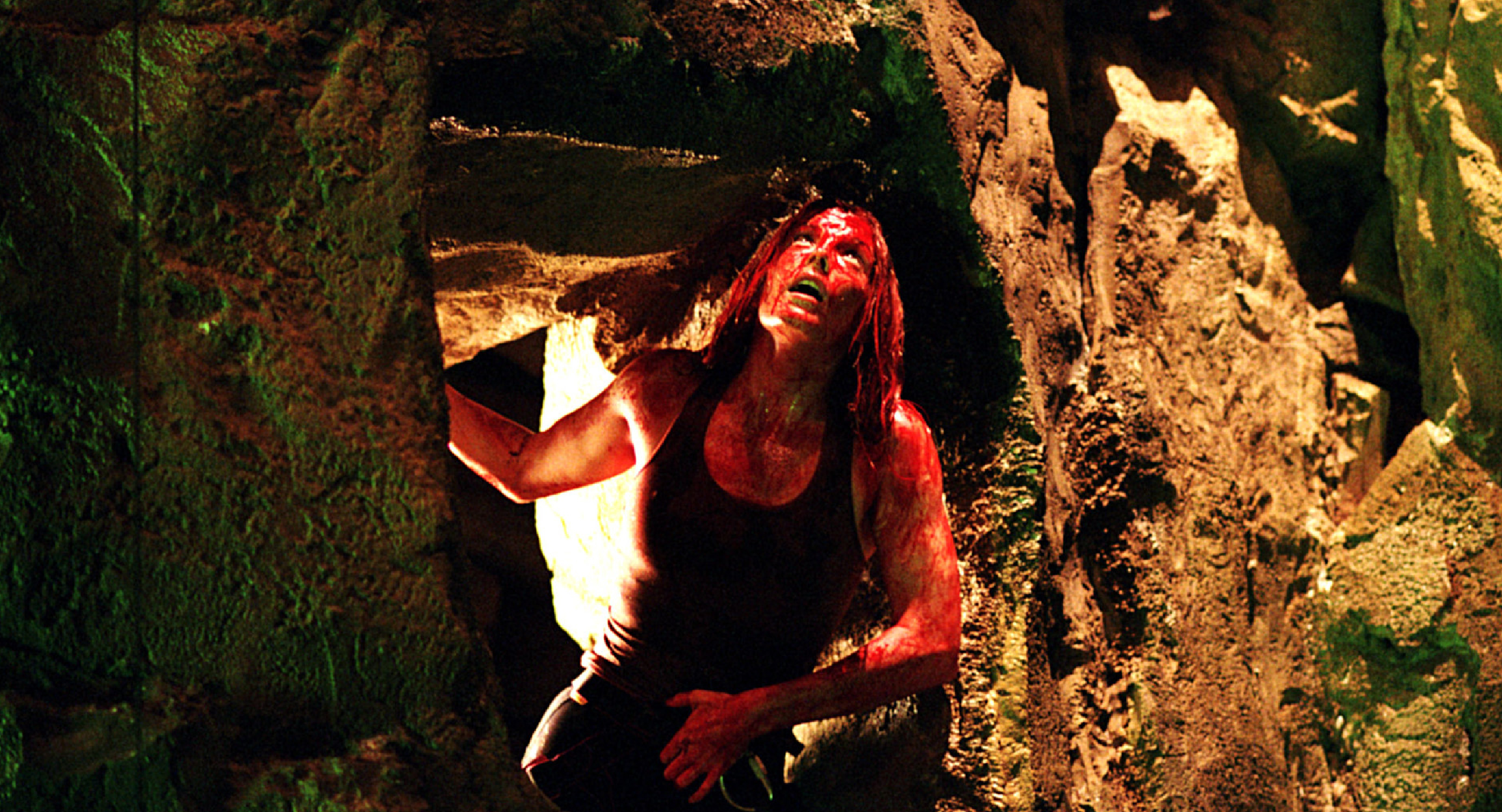The Descent – Film Review
Published August 5, 2023

A year after a severe emotional trauma, Sarah goes to North Carolina to spend some time exploring caves with her friends; after descending underground, the women find strange cave paintings and evidence of an earlier expedition, then learn they are not alone: Underground predators inhabit the crevasses, and they have a taste for human flesh.
Directed by Neil Marshall, The Descent is a horror film that takes audiences on a nerve-wracking journey deep underground. Released in 2005, this British horror gem quickly became a cult classic for its tense atmosphere, masterful direction, and unforgettable frights. The film primarily follows a group of adventurous and close-knit female friends as they embark on a caving expedition. However, as the group descends deeper into the uncharted caverns, they find themselves facing not only the natural dangers of the subterranean world but also their own inner demons. The Descent has garnered both praise and criticism for its unique setting, relentless tension, and character-driven narrative.
The Descent excels in establishing its characters and their relationships from the beginning. The main protagonist, Sarah, portrayed convincingly by Shauna Macdonald, carries the emotional weight of the film on her shoulders. Marshall takes the time to establish Sarah’s backstory, exploring the tragic loss that haunts her throughout the movie. This attention to character development allows the audience to empathize with Sarah’s fears and anxieties, making her journey into the dark and claustrophobic caves all the more harrowing.
The supporting characters are equally well-crafted, each with their distinct personalities and quirks. Juno (Natalie Mendoza), the adventurous and headstrong friend, becomes the driving force behind the group’s decision to explore an unmapped cave system, providing a catalyst for the horrors that follow. The camaraderie between the women feels genuine, and their conversations during the initial caving adventure create a strong foundation for the tension that builds later on.
One of the film’s greatest strengths lies in its unique and terrifying setting. The cave system, captured beautifully by the cinematography, becomes an integral character in its own right. The darkness, tight spaces, and eerie silence amplify the feeling of dread and claustrophobia, effectively transporting the audience into the world of the characters. As the group descends further into the unknown, the cinematography skillfully conveys a sense of disorientation and helplessness, creating an immersive experience that keeps the audience on edge throughout.
The use of practical effects and minimal lighting adds to the realism of the cave scenes, making the encounters with the unknown creatures genuinely terrifying. The film masterfully balances the anticipation of a jump scare with the quieter, more psychological horror of being trapped underground with unknown terrors lurking in the shadows.
The Descent is unapologetically brutal in its horror execution. Neil Marshall expertly blends psychological terror with shocking gore, leaving audiences squirming in their seats. As the creatures emerge from the darkness, the film becomes a relentless rollercoaster of suspense and frights. The lack of a traditional horror score during certain scenes adds to the tension, allowing the natural sounds of the cave and the characters’ terrified breathing to fill the silence, amplifying the sense of vulnerability and fear.
One of the film’s greatest achievements is its ability to keep the audience guessing. The claustrophobic and dark environment obscures the creatures’ appearances, heightening the suspense as they strike from the shadows. These creatures are genuinely terrifying, with their pale, almost inhuman appearance, and their animalistic behavior makes them formidable antagonists.
Beneath the surface, The Descent also explores deeper themes beyond its horror elements. The film delves into the darkness within the human psyche, represented not only by the creatures lurking in the cave but also by the characters themselves. Each member of the group confronts their inner demons, symbolized by their struggles in the cave. The movie serves as a metaphor for facing personal traumas, fears, and guilt. Sarah’s journey, in particular, becomes a cathartic and redemptive one, allowing her to find strength in the face of unimaginable horrors.
The film also explores themes of friendship, trust, and betrayal, adding layers to the character dynamics and emotional impact of the story.
The Descent is a genuinely chilling and intense horror experience that remains a standout in the genre. Neil Marshall’s direction, along with the strong performances and well-developed characters, propels the film beyond the boundaries of traditional horror. The cave setting creates an atmosphere of relentless claustrophobia and vulnerability, making every scare and encounter all the more impactful. However, the graphic and unrelenting violence might not be to everyone’s taste, and the lack of a definitive ending has polarized audiences.
